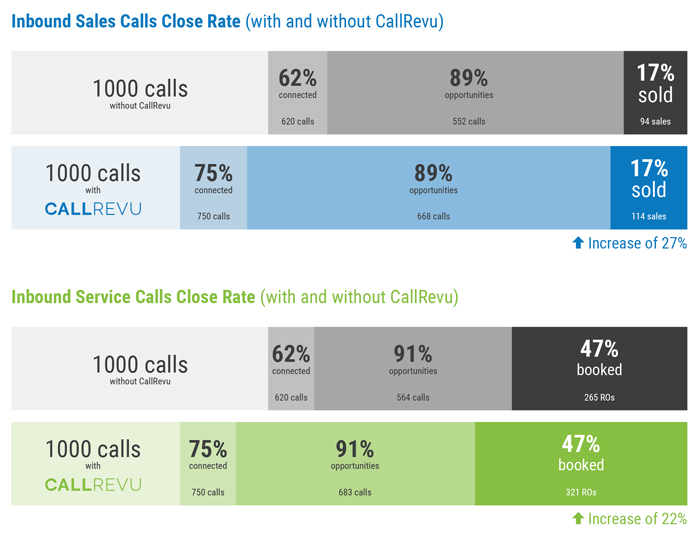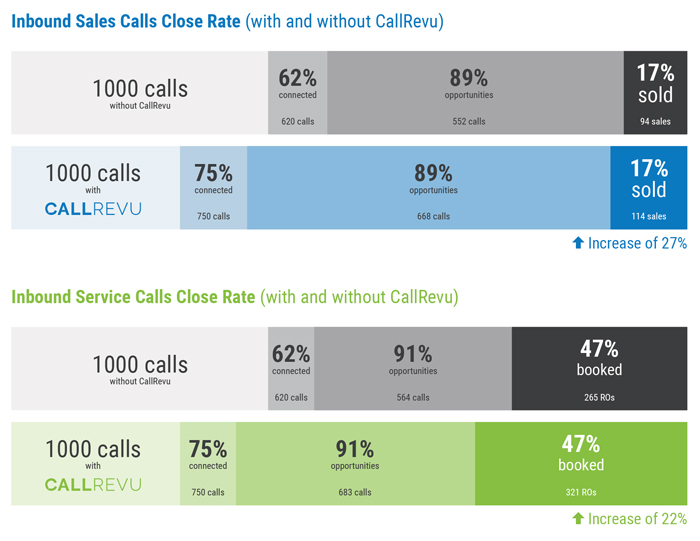The average dealership receives approximately 10 hours of phone calls every single day. The sheer volume makes it easy to miss a call ‚ or even several ‚ each day. Even if you had time to listen to some of those calls, you still need a way to document them, to report on the wins or losses, to celebrate those who excel and to train those who need it.
by Steve Laureys
Dealerships get paralyzed with information. Every day someone walks in and reminds them of some dashboard, report or KPI that they have forgotten about ‚ so many simple reports, which, if used as intended, would increase their sales immediately. Often, these tools and reports are just a long road taking you back to the basics. Let’s face it ‚ if the basics are not covered, then nothing else matters. Nothing else is going to work.
No communication method or outreach method is more basic than the phone, and no other tool affects every single employee like the phones do. Despite the seemingly obvious value of customer calls, dealership team members fail to maximize the possibilities of these calls every single day.
Why do we fail on the phones?
The average dealership receives approximately 10 hours of phone calls every single day. The sheer volume makes it easy to miss a call ‚ or even several ‚ each day. Even if you had time to listen to some of those calls, you still need a way to document them, to report on the wins or losses, to celebrate those who excel and to train those who need it.
As dealers, you have likely tried phone scripts, training videos, role-playing and even shadowing on the phones. Then, you turn your staff loose again, and a month later, you are back to the same behaviors you once had. Add turnover, role changes and ever-shifting priorities to this and you now have a very long list of priorities that need your attention. Ultimately, you fail because you do not commit the right resources or provide a clear definition of what success will look like.
If the sales call does not connect, nothing else will work.
Dealerships spend tens of thousands of dollars each month to drive business to stores through leads and calls. Sales team members send hundreds of emails to leads in an effort to get customers on the phone. If you can get them on the phone, you have a good chance of getting them in the showroom and a much higher chance of closing with face-to-face interaction.
The real challenge is this: 38% of those calls will not connect. Imagine putting in all that effort, only to have those investments wasted. Often the dealer has no idea this loss is taking place. Even if your team provides a mediocre experience on the phone, two out of five calls will end without them even having a chance to step up to the plate, much less swing the bat. Think of it simply. Customers today have a high level of urgency to complete tasks with a very low threshold for pain or inconvenience. If you aren’t making it easy, you’re likely missing out on a sale.
How does this affect sales?
Almost every dealer uses a sales process that involves the steps from lead generation to close. Phone success has a similar path with KPIs that lead to a sale, making the process of measuring success easier.
A call must connect. That means it has to ring in the dealership successfully and be answered by the staff, either with an interactive voice response (IVR) (press one for service ) or a real person. Many, many, many dealers are surprised how many of their phone lines do not pass a basic connection test. Configurations change, people leave and processes stop working. Customers do not understand how that affects your ability to attend to their needs. They just feel slighted.
Calls need to be routed to the right place. Customers call for a reason, and if they are consistently routed and re-routed or sent to voicemail, never to receive an appropriate answer, that’s going to cause a loss of faith in your dealership. Again, 38% will not make it to an actual person.
Once the call is connected, you need to be able to assess the difference between all calls and opportunity calls. If someone is calling to check on title work, that person might ask for sales. That does not make it a sales opportunity call. If a caller is asking for the price of a service, that’s an opportunity call. Separating these relieves training and measurement pain points that can derail a perfectly good plan.
For the sake of brevity, let’s assume your store is average at asking for appointments and that you are able to set appointments and overcome objections so the appointments will show. Additionally, let’s assume that the in-store sales process allows for an average experience when they are showing for appointments. If you just answer the phone more consistently, without changing anything else, you will see a boost in numbers just by finding the technology problems and correcting them.

How does this affect repair order (RO) closure?
Service calls can be measured similarly. Think about how many times you have walked in the service drive and heard the phone ringing while the adviser is in the back of the shop or just typing diligently on the computer. The problem there is often much larger than 38% of calls not connecting.
The steps to the call are very similar from a KPI perspective, and that allows for simplicity in understanding. What is different is the purpose of the calls. Most service department calls have one of three purposes:
• Status check
• Vehicle concern
• Request for appointment.
That means that two out of three of the above purposes are opportunities to drive an appointment. As a result, service calls have a higher call-to-revenue generation percentage despite the per-transaction value being lower than with sales calls.
If we compare average connectivity in service to the same improvement level, the net effect is so much higher in service than even in sales. This all relates to the customer’s intentions for calling. Service customers are also 28% less likely to call you back (except on status checks) if their calls do not connect, as opposed to sales calls. So, the service call greatly impacts retention as well.
Just going from an average of answering three out of four calls, you see an 18% increase in closed ROs!






